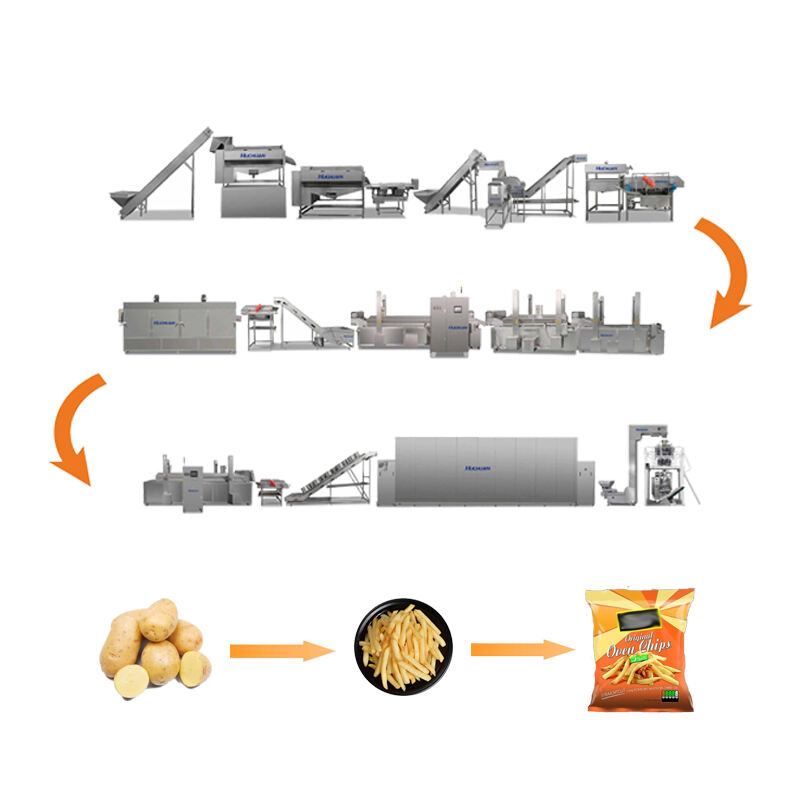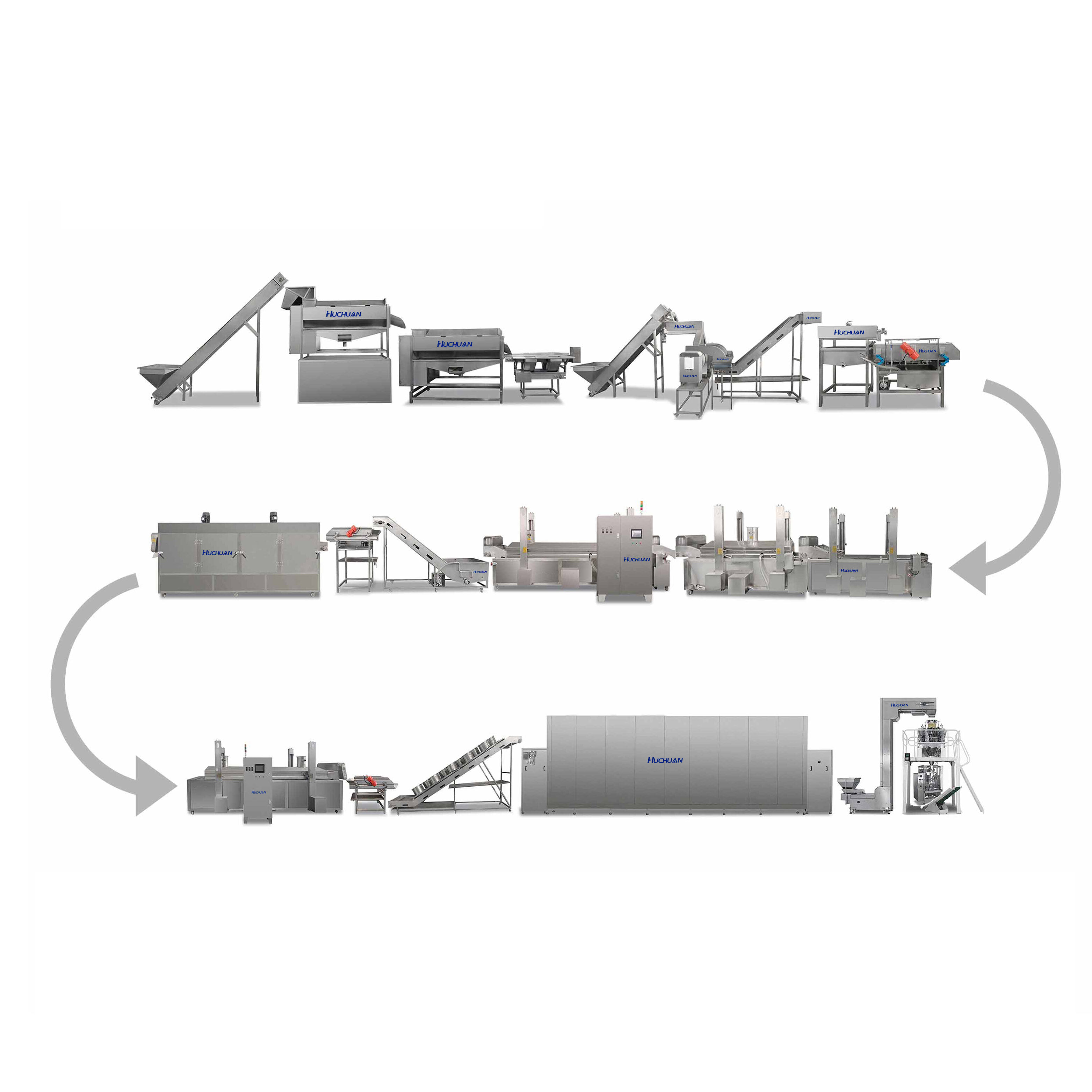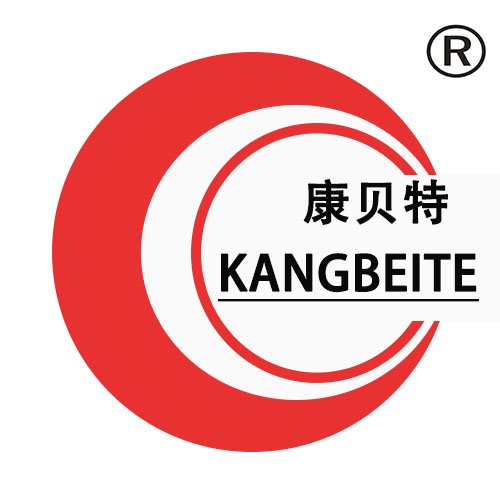A fully automatic french fries production line is an integrated system that handles every stage of potato processing—from raw potato washing to finished frozen or packaged ready-to-eat fries—with minimal human intervention, designed for medium-to-large processors (fast-food suppliers, retail brands) with daily output of 500–2000 kg. It combines speed, consistency, and food safety to meet the high demand for standardized french fries while preserving texture (crisp exterior, fluffy interior) and reducing waste. The line’s workflow is seamless and automated: raw potatoes are unloaded into a bulk hopper and conveyed to a pre-washing tank (rotary brushes + high-pressure water) to remove dirt and loose skin. A destoning system (using water density to separate stones from potatoes) prevents equipment damage and ensures food safety. Peeling uses a steam peeling system (100–105℃ steam for 40–60 seconds) or mechanical peelers (abrasive rollers) depending on potato variety—steam peeling is gentler (waste <5%) for high-quality fries, while mechanical peeling is cost-effective for bulk production. After peeling, potatoes are inspected via an optical sorter (removing peeled potatoes with defects like bruises or eyes) before cutting. The cutting module uses a multi-blade rotary cutter (adjustable blade spacing: 6–12mm for standard fries, 10–15mm for thick-cut) with a water spray system to remove excess starch—critical for preventing fries from sticking together and ensuring even frying. Blanching is a key quality step: fries are immersed in 80–90℃ hot water for 2–3 minutes to gelatinize starch (improving crispness) and inactivate enzymes (preventing browning). A cooling conveyor (chilled water, 0–5℃) stops cooking, followed by a dewatering system (air blowers or centrifuges) to remove surface moisture. For frozen fries, the line uses an IQF (Individual Quick Freezing) tunnel (-35℃ to -45℃, 8–12 minutes freezing time) to freeze fries individually, ensuring they do not clump. For ready-to-eat fries, a continuous fryer (175–190℃ vegetable oil, 2.5–3.5 minutes frying time) is used, with an inline oil filtration system to remove food particles and maintain oil quality. A deoiler (centrifugal or air-blow) reduces fat content to 15–20% for healthier options. Packaging is fully automated: frozen fries are weighed and packed into moisture-proof bags (100–150 CPM) or cartons via a case packer, while ready-to-eat fries use modified atmosphere packaging (MAP, 70% N₂, 30% CO₂) to extend shelf life to 5–7 days. Quality control is integrated throughout: metal detectors, checkweighers (±1g accuracy), and seal integrity testers ensure compliance with food safety standards (FDA, EU 1333/2008). All food-contact parts are 304 stainless steel, with CIP systems for automated cleaning to prevent cross-contamination. For processors, this line ensures consistent fry size, texture, and flavor (batch-to-batch variation <2%), meets fast-food chain specifications (e.g., uniform length for fry dispensers), and scales to handle peak demand (e.g., holiday seasons).




Copyright © 2025 by Shandong Kangbeite Food Packaging Machine Co., Ltd. Privacy policy